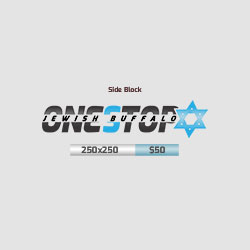The Synthesis
We read the Torah portion of Ha’azinu either between Rosh Hashanah and Yom Kippur or between Yom Kippur and the Holiday of Sukkos, as it is in this year of 5780.
This suggests that Ha’azinu mediates between the solemn theme of Yom Kippur and the unbounded joy of Sukkos.
Where do we find a reference to the synthesis of these two disparate Holidays?
The answer is found in the very first verse of Ha’azinu!
Ha’azinu begins with the words: “Listen, O heavens, and I will speak; and may the earth hear the words of my mouth.”
Our Sages point out that the word ha’azinu-listen (or “give ear”) implies that Moses was in close proximity to the heavens and distant from the earth. By contrast, with respect to the earth, Moses uses the term shema-hear that connotes distance, for Moses was closer to the heavens than he was to the earth.
The prophet Isaiah, our Sages point out, reverses this language and uses “shema-hear” for the heavens and ha’azinu for the earth because, notwithstanding his lofty soul as one of the greatest prophets, he was still closer to the earth than he was to the heavens.
We know that everything mentioned in the Torah must serve as a lesson to us, even matters that may appear to be way beyond our level of understanding. The diverse ways Moses and Isaiah addressed heaven and earth are no exception. There are times when we are empowered to follow the Moses’ formula, and sometimes we must follow the formula of Isaiah.
And although Moses, exclusively, addressed the heaven and earth with added closeness to heaven, it is also an eternal lesson for all of us to occasionally address the heaven and earth within us, in that order.
The Internal Heaven
What is the heaven within us?
A burglar enters a home and hears a voice saying, “heaven is watching!” The startled burglar looks in all directions in the dark house and cannot see the person who made that announcement. So he gropes to find the switch and when he turns on the light he sees a parrot squawking: “heaven is watching you.”
“Do you think, I’m afraid of a dumb parrot? Who do you think you are?” shouts the burglar.
The parrot replies, “I’m Moses!
“Ha,” the burger exclaims derisively, “which idiot names his parrot Moses?”
“The same one who named his pit-bull Heaven…” were the last words he heard from the parrot.
The “heaven” within us hears the heavenly voice that emerges from Mount Sinai, the voice which beckons us to do Teshuva, to return to G-d. But most of the year we do not consciously hear that voice because we are not in touch with our internal heaven. At best, the Ba’al Shem Tov taught, our soul’s subconscious source picks up the celestial cry and relays it to our conscious mind. This, in turn, stirs the person. Sadly, and most frequently, we ignore the feeling and dismiss it as a mid-life crisis or even indigestion. We fail to realize that our soul’s heaven has just been contacted by the celestial “heaven.”
However, there is one time during the year when we are all empowered to feel closer to heaven and privileged to hear its piercing and inspiring sound. It is the period of the Days of Awe, from Rosh Hashanah through Yom Kippur. This is the time of Divine intimacy. Every Jew who comes to Shul will hear the haunting melody of Kol Nidrei, the heart-rending story of the Ten Martyrs, and the collective cry of Shema Yisroel-Hear O Israel that marks the climax of the N’eilah service.
All this occurs in the context of our living like angels, without food or drink.
During this awe-inspiring period, which begins on Rosh Hashanah and concludes on Yom Kippur, we are certainly closer to Heaven than to Earth.
Thus we say to the “heavens” within us, “listen” to the heavenly voice that beckons us and inspires us to change.
The Internal Earth
But what about the earth within us?
The Hebrew word for earth, eretz, is said to derive from a root that means both desire and run. The earth is the part of us that harbors a desire to do G-d’s will within the framework of the physical (“earth”) world.
The entire objective of hearing the heavenly voice while we are in a heavenly state on Yom Kippur is for us to translate receptivity to the heavenly voice into a conscious and overt desire to fulfill G-d’s will within the context of the physical world.
If “heaven” is a fitting metaphor for Yom Kippur, then “earth” is an apt metaphor for the Mitzvah of Sukkah. After all, the Mitzvah of Sukkah is arguably one of the most physical of Mitzvos in many ways.
First, it involves constructing a Sukkah. Other Mitzvos like Tefillin, Tzitzis, Shofar, tzedakah, etc., generally do not involve construction of their physical instrumentality. Most people who wear Tefillin, for example, do not make their own; that is invariably performed by a trained scribe. The same is true for the other Mitzvos.
By contrast, most people who perform the Mitzvah of dwelling in a Sukkah are actually involved in part or all of its construction.
Second, to fulfill the Mitzvah of Sukkah, one must enter into it totally. The entire physical body must be enveloped by the Sukkah, including one’s clothing and, as the expression goes, “even with our boots.”
Third, the actual Mitzvah is to live our physical lives in the Sukkah; dwelling, eating, and sleeping [although some do not sleep – that is a separate discussion for another time]. The Sukkah involves the totality of our physical and material existence.
Fourth, while most other Mitzvos can be performed within a few minutes or over a few hours a day, the Mitzvah of Sukkah demands our observance for 7 days and nights [in the Diaspora, eight days].
Hence, the Mitzvah of Sukkah is arguably the most comprehensively physical Mitzvah because it involves the total physicality of the person and the world.
Yom Kippur to Sukkos: Going from Heaven to Earth
We can now understand how reading parsha Ha’azinu mediates between Yom Kippur and Sukkos.
Yom Kippur and Sukkos represent the involvement of the heavenly and earthly aspects of our souls, respectively.
Isaiah: Hearing the Sounds of Geulah
However, the prophet Isaiah begins by saying first that the heavens shall hear, and then the earth should listen.
Why change the word order from that used by Moses and how do we implement that rearrangement in our own lives?
While Moses addresses first the Yom Kippur-heavenly Jew, which then leads into the earthly observance of the Mitzvos, Isaiah speaks to the Galus-exile Jew who is closer to the earth, and who observes the commandments with minimal spirituality.
Isaiah, the prophet of the Redemption declares this to the Exile Jew:
Although you are far from heaven, nevertheless you must endeavor to add spirituality to your Mitzvos. Try to get the heavenly component of your soul to tune into the heavenly declaration; you are close to the Redemption. Even though you are a product of thousands of years of alienation from the heavenly dynamic that exemplified the Bais Hamikdash, you can still touch and reveal the heaven within you, because you are living on the cusp of the future Redemption. Even before it begins, we can and will benefit from its inspiring and uplifting sounds.


